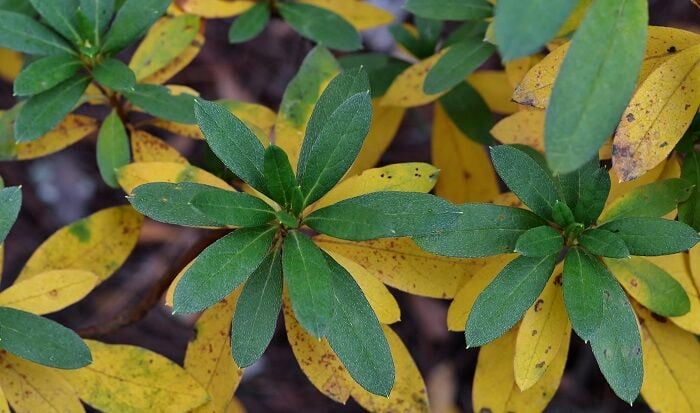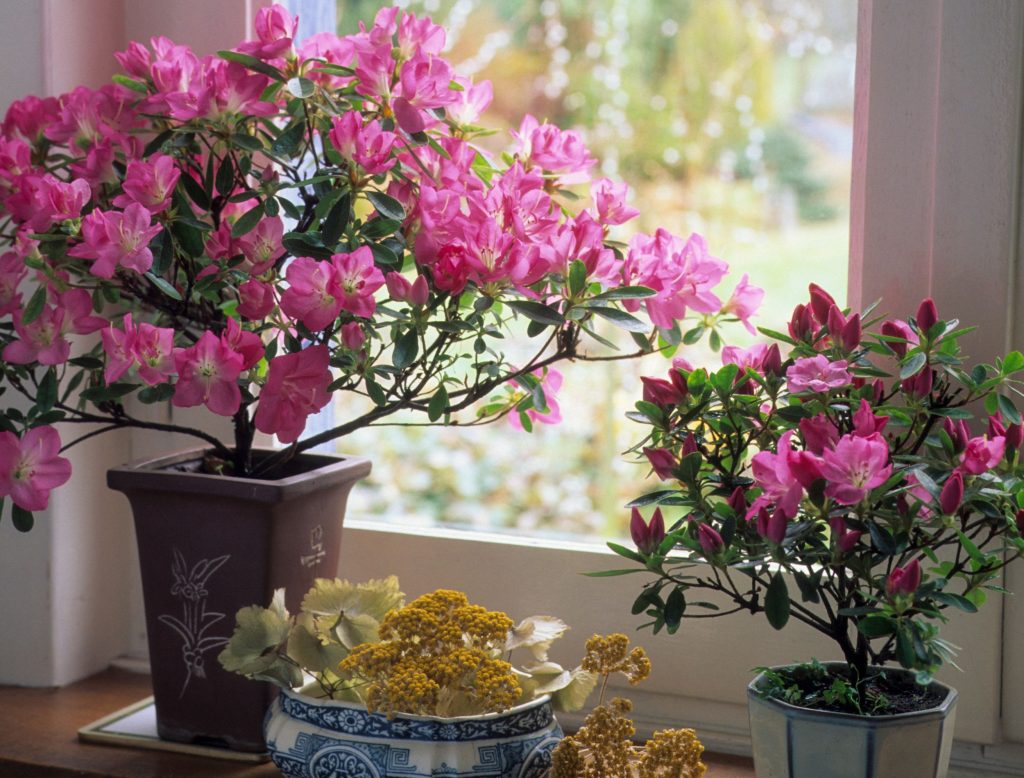Azaleas are one of the most beloved flowering plants, known for their vibrant blooms and ability to add color to any garden or indoor space. Whether you’re a seasoned gardener or just starting out, understanding how to care for azaleas can help you enjoy their beauty year after year. From light requirements to pruning techniques, this guide covers everything you need to know about these stunning plants.
Understanding Azalea Care
Light Requirements
Azaleas thrive in bright, indirect light. An east-facing window is ideal, as it provides gentle morning sun. They can also do well near a north-facing window or a bit further back from a west or south-facing window. Avoid direct sunlight, as it can scorch the leaves and flowers. If you only have a sunny spot, use a sheer curtain to filter the light.
Watering
Azaleas are thirsty plants and must never be allowed to dry out completely. Water them regularly, keeping the soil consistently moist but not waterlogged. A good method is to place the entire pot in a larger container of water for 15-20 minutes, allowing the peaty soil to become fully saturated. Let it drain completely before placing it back in its saucer. Never let your Azalea sit in a tray of standing water, as this can lead to root rot.
Soil and Drainage
Azaleas require a soil mix that is both moisture-retentive and well-draining, with an acidic pH. A mix designed for Rhododendrons or Azaleas is ideal. You can also create your own mix by combining equal parts peat moss, potting soil, and perlite. Always use a pot with drainage holes to prevent waterlogging.
Fertilizing

Feed your Azalea with a fertilizer specifically formulated for acid-loving plants. Apply it every two weeks through the spring and summer, but stop fertilizing in the fall and winter to allow the plant to prepare for its dormant period.
Temperature and Humidity
Azaleas prefer cool conditions, ideally between 60-65°F (15-18°C). Avoid heat sources like radiators and heating vents, as they can cause the plant to wilt. Maintain a humidity level of around 40-60% by using a pebble tray, humidifier, or grouping plants together.
Pruning and Repotting
Pruning
Prune your Azalea right after it has finished flowering to encourage bushier growth. Remove any dead or weak stems and shape the plant as needed. Avoid pruning too late in the season, as this can cut off future blooms.
Repotting
Repot your Azalea every few years to ensure it has enough space to grow. Use a pot with drainage holes and a suitable soil mix. Check the roots for signs of rot or overcrowding, and trim them if necessary.
Common Problems and Solutions

Yellowing Leaves
Yellowing leaves can be caused by overwatering or soil that is not acidic enough. Check your watering habits and use a fertilizer for acid-loving plants.
Brown, Crispy Edges
This is often a sign of underwatering or low humidity. Ensure the soil remains consistently moist and increase the humidity around the plant.
Leaf Drop
Sudden leaf drop can indicate shock from a rapid change in temperature or dry soil. Keep the plant in a stable environment and water regularly.
Failure to Bloom

If your Azalea doesn’t produce buds, it may not have had a long enough or cold enough chilling period. Provide a cool, dark environment for a few weeks to encourage reblooming.
Popular Azalea Varieties
Evergreen Azaleas
Evergreen azaleas retain their leaves year-round and are ideal for adding color to your garden in all seasons. Some popular varieties include:
- Perfecto Mundo® Double Pink: Known for its large double pink flowers that bloom in spring and again in summer.
- Encore ‘Autumn Amethyst’: A reblooming variety with large purple flowers that appear in spring and again in fall.
- ‘George L. Taber’: A Southern Indica hybrid with showy orchid-colored blooms in early spring.
Deciduous Azaleas
Deciduous azaleas lose their leaves in the fall and are known for their vibrant fall foliage. Some popular varieties include:
- ‘Fireball’: Features fiery orange-red flowers and deep bronze foliage in the fall.
- ‘Northern Hi-Lights’: A hardy variety with fragrant flowers and brilliant burgundy-red foliage in the fall.
- ‘Gibraltar’: Produces deep crimson buds that open to coppery-orange flowers with a subtle fragrance.
Design Ideas and Uses
Landscaping
Azaleas are versatile plants that can be used in a variety of ways. They make excellent hedging, screening, or foundation plantings. Smaller specimens are suitable for containers, while larger varieties can be used to mass along slopes or hillsides for erosion control.
Indoor Display
Azaleas make stunning centerpieces for dining tables or coffee tables. Place them in a bright, cool corner of a room where their color can liven up the space. Group them with other plants that enjoy similar conditions, like ferns and other flowering houseplants, to create a lush, vibrant display.
Gift Plant
An Azalea in a decorative pot makes a wonderful and long-lasting gift for any occasion. Choose a variety that suits the recipient’s space and preferences.
Final Tips for Azalea Care
- Keep the soil consistently moist.
- Prune after blooming to encourage a fuller plant and more flowers next season.
- Provide a chilling period in the fall to encourage reblooming.
- Use a fertilizer for acid-loving plants to keep your Azalea healthy and happy.
Whether you’re growing azaleas indoors or outdoors, understanding their specific needs can help you enjoy their beautiful blooms year after year. With the right care, these stunning plants can transform your garden or home into a colorful oasis.











More Stories
What Is Yodo Para Tiroides and How Does It Affect Thyroid Health?
What is WSET? A Comprehensive Guide to Wine Education
US Trending News: What Are Winter Bones? A Guide to the Seasonal Trend in Bone Health